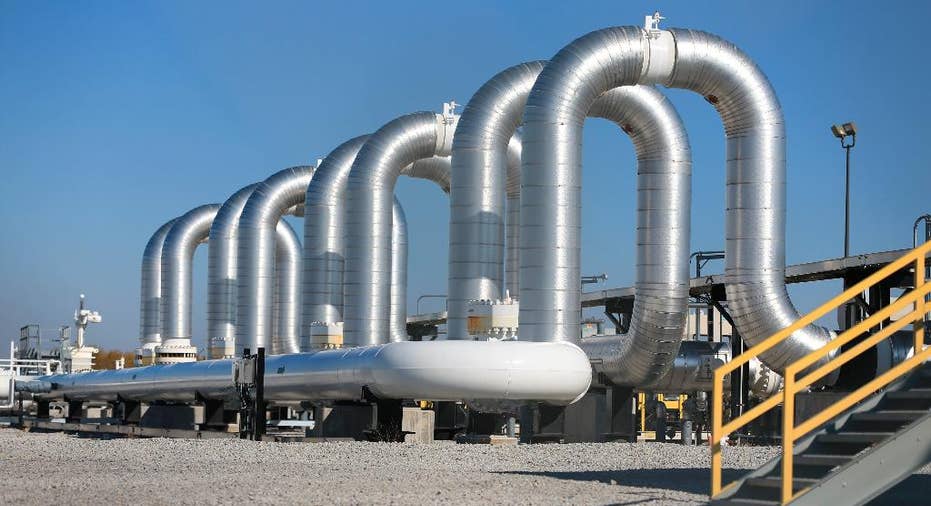Debate renewed over economic benefits of Keystone pipeline

President Donald Trump is calling his administration's approval of the Keystone XL pipeline a new era for American energy policy.
As expected, the State Department reversed a decision by the Obama administration and favored energy development over environmentalists' objections to the pipeline, which will carry thick Canadian crude oil to Nebraska, where it can flow on to refineries along the Gulf Coast.
Trump on Friday called it "a great day for American jobs." The costs and benefits of the pipeline have been hotly debated, however, and many experts believe it will have only a small impact on the U.S. economy.
JOBS
The company proposing the pipeline, Calgary-based TransCanada, estimates the project could create up to 6,500 construction jobs for two years. In a 2014 report, the State Department projected the pipeline would support 3,900 in construction jobs.
Including work indirectly related to the construction, the number of jobs balloons to 42,100, the State Department estimated. But once the pipeline is finished, it will create just 35 permanent jobs, according to the report.
ECONOMIC IMPACT
The State Department estimated that construction of Keystone XL would contribute $3.4 billion to the nation's output. That's about 0.02 percent of the $18 trillion U.S. economy.
TAXES
The State Department estimated that Keystone XL would generate $70 million in new state and local taxes along the route during construction and $55.6 million in property taxes once oil starts flowing.
COSTS
Environmental groups say TransCanada overstates the economic benefits of the pipeline and lowballs the impact of using tar-sands oil. They say it generates more carbon emissions to refine the heavy, thick crude than to process other oil types. A civil engineer at the University of Nebraska said that TransCanada also significantly underestimated the chance of a major oil spill from the 36-inch-diameter pipeline.
OIL
Keystone XL would carry up to 830,000 barrels a day from Alberta to Nebraska, where it would connect with the existing Keystone pipeline that flows to Gulf Coast refineries.
"North America continues to need crude oil, and North America continues to import crude oil and will for some time, for years to come" and the pipeline "is still needed," TransCanada CEO Russell Girling said in a video posted on the company website.
In January Girling had leavened his optimism with some doubts because of uncertainty about demand from oil producers.
Canada is the largest exporter of oil to the U.S., at about 3.4 million barrels a day. Running at capacity, Keystone XL would equal about one-fourth of the current flow. US oil production is around 9 million barrels per day.
Two other planned pipelines would carry Alberta oil to export markets, creating competition with Keystone XL for commitments from oil producers. Some analysts think only two of the three pipelines will get built.
By providing a route to the Gulf Coast, Keystone XL could raise the price of tar sands oil. Among the oil companies that could benefit: Canada's Suncor Energy Inc. and Canadian Natural Resources Ltd. and Texas-based Exxon Mobil Corp., whose former CEO, Rex Tillerson, is now the secretary of State.
GASOLINE PRICES
Building the pipeline will take two years or longer, so there will be no immediate effect on prices at the pump. It's not clear that Keystone XL will eventually lead to lower prices — it could have the reverse effect.
Patrick DeHaan, an analyst for the price-tracking service GasBuddy.com, said the pipeline could lead to higher prices for Canadian crude oil, which has long sold at a discount.
AMERICAN STEEL
Trump said in January, while announcing his support for Keystone XL and Dakota Access, that he would require pipelines to be made with American steel, but there is no such requirement for Keystone XL. A White House spokeswoman said this month that Trump's directive applied only to new pipelines, and since TransCanada had already stockpiled pipe, "the steel is already literally sitting there. It would be hard to go back."
About half of the pipe is from the U.S. and the rest comes from Canada, Italy and India.



















